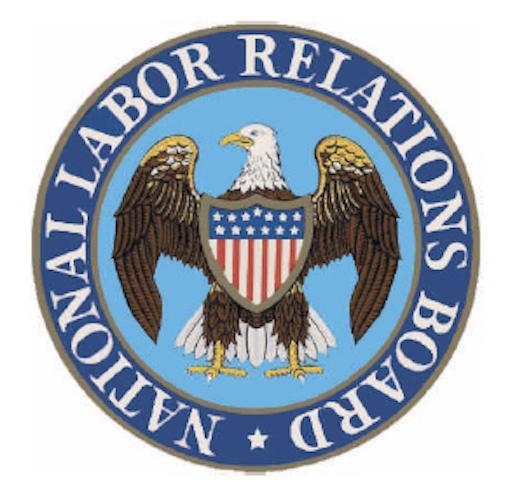In the first use of a 61-year-old Supreme Court decision, the Machinists (IAM) sued the National Labor Relations Board for throwing out their union recognition election win among 178 Boeing flight tech workers in North Charleston, South Carolina.
The suit, filed Nov. 13 in U.S. District Court in Charleston, says the Trump-named three-man Republican majority on the National Labor Relations Board illegally overturned Regional Director John Boyle’s approval of the union’s 104–65 win among flight technicians at Boeing’s facilities. Boyle OK'd the vote results, turning aside Boeing challenges more than a year before, but the board majority reversed him on Sept. 9, 15 months after the balloting.
That not only violated the Supreme Court’s ruling but hamstrung the union from informational picketing telling the public what was going on, IAM’s suit says. The Machinists’ suit against the board is the latest chapter in a long-running saga over Boeing’s move of most of its 787 Dreamliner production from its Machinists-unionized plants in the Pacific Northwest to North Charleston. Boeing’s then-CEO specifically, deliberately and publicly moved the Dreamliner work to union-hostile South Carolina strictly because the Machinists stood up for their 45,000 Boeing members in the Seattle and Everett, Washington, and Portland, Oregon, areas.
The board’s Barack Obama-nominated general counsel, after a complaint from IAM about illegal company retaliation, tried to mediate, but Boeing refused to talk. He then filed labor law-breaking—officially called “unfair labor practices”—charges against Boeing. His decision, in turn, set off fireworks in D.C. Sen. Lindsay Graham (R-S.C.) got so mad he held up every Obama nomination for any federal post, including vacant NLRB seats. Graham’s blockade led to a strong progressive campaign to end Senate filibusters against executive branch nominees.
Then-Majority Leader Harry Reid (D-Nev.) agreed. Current Majority Leader Mitch McConnell (R-Ky.) has used that filibuster end to seat Trump-named right-wing-leaning individuals as federal judges, Supreme Court justices and in government posts.
Meanwhile, IAM tried other organizing drives in North Charleston. It had to drop one drive among all the workers in the plant after its organizers were physically threatened, including death threats.
So it successfully organized the smaller group, the flight techs. With all that in the background, though not in the court papers, the Machinists are suing not just the board, but its GOPers as individuals “in their official capacity,” along with—by law—dissenting Democrat Lauren McFarren. But IAM’s 16-page brief notes she disagreed with and voted against her colleagues.
“In seeking review of the Boeing decision, the lAM invokes the...1958 exception to the general rule that NLRB representation case decisions, such as Boeing, are not directly judicially reviewable,” IAM’s suit says.
Usually, when a company wants a judge to review whether the union can represent workers, it “must commit an unfair labor practice and then obtain review in the context of a petition” to federal district courts. But in 1958, IAM explained, the Supreme Court “crafted a narrow exception to this limited unfair labor practice path to review of representation issues, determining federal district courts” legally can kill “NLRB representation case orders issued in excess of the agency's delegated powers” from Congress. And since the NLRB majority used its ruling against the Machinists in North Charleston to establish new rules for when unions can organize small units of companies, that move “exceeded its delegated powers,” the union said.
Until the GOP board majority’s Boeing ruling, IAM explained, unions could organize such small units if there was “a community of interest” among the workers involved and if they had different interests and worked under different conditions from all the other workers at the same company. Boyle said that was the case with the 178 techs. They all performed the same, highly technical checks to make sure the 787 Dreamliner was airworthy.
They all had specialized skills the other 2,000 Boeing workers in North Charleston—who actually assemble the planes—lack. The techs get paid substantially more, got a bonus the other workers didn’t, and they don’t even work in the main plant.
They toil in a separate building a half-mile away. That meant, Boyle said, IAM could seek and get a recognition vote among the techs, rather than combining them with the other 2,000 Boeing workers.
The board majority tossed out Boyle’s reasoning with “one paragraph of” explanation, tossed the election out and set up new standards. The majority said the techs individually all did not have the same community of interest with each other, but all shared a community of interest with the other 2,000 Boeing workers, so the vote should be among everybody. And the NLRB said it also must consider industry conditions.
The big vote, or no vote at all, is what Boeing wanted. The larger the group, it knew, in union-hostile South Carolina, the easier it would be to beat IAM. The board majority, brushing aside the 61-year-old Supreme Court decision, ruled for Boeing, leading to the IAM’s suit. No date has been set for hearing the case.

